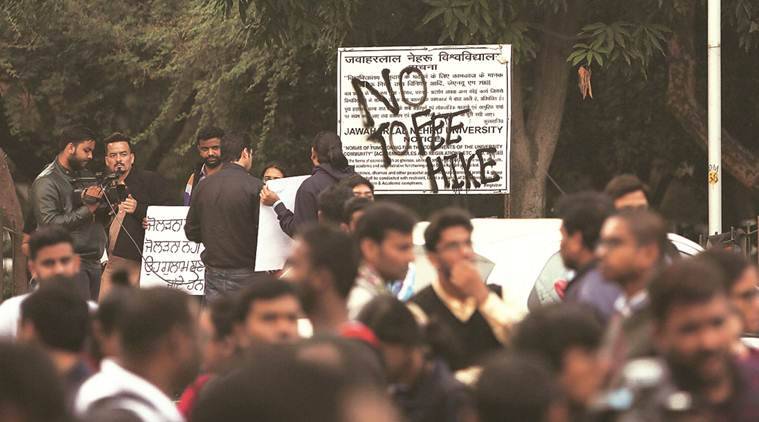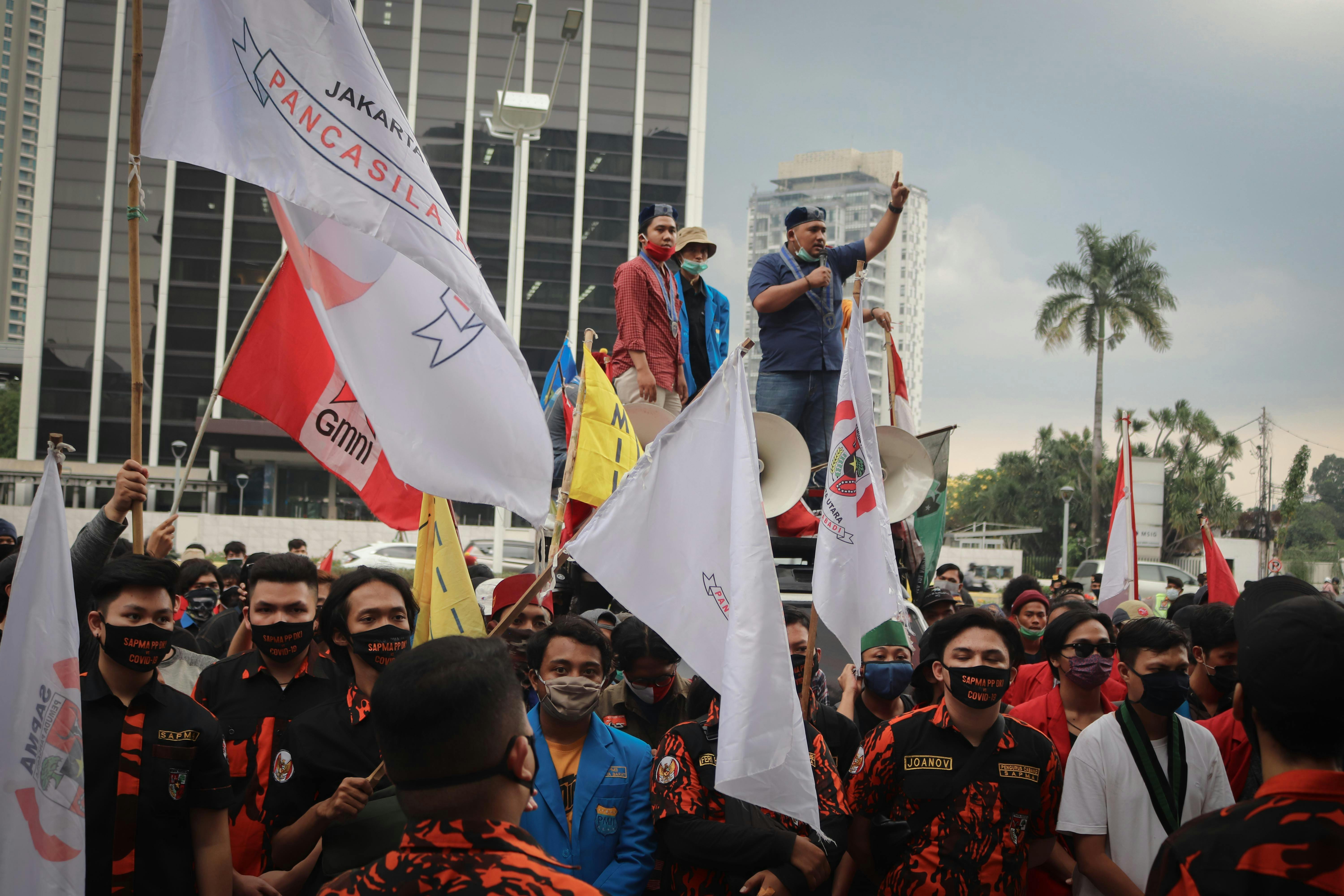The role of rural youth in politics is rarely ever spoken about. While young rural voters are seen as a key demographic during elections, they are rarely ever promoted as politicians. Let’s try to comprehend how youth’s decision to pursue politics is being impacted by this cynical vote bank politics.
In the 21st century, most economists and politicians have increasingly talked about rural development and its role in shaping India’s future. Some development schemes such as the Deen Dayal Upadhyaya Grameen Kaushalya Yojana or the Sansad Adarsh Gram Yojana, etc. have been implemented by the government to increase employment and improve the standards of living in rural India.
However, the role of rural youth in politics is rarely ever spoken about. While young rural voters are seen as a key demographic during elections, they are rarely ever promoted as politicians. Let’s try to comprehend how youth’s decision to pursue politics is being impacted by this cynical vote bank politics.
To fully comprehend why the rural youth is not entering politics, we must address the larger issue of migration. The large majority of the youth do not choose to live in the villages instead, they wish to migrate to some urban areas. According to a 2017 study, India had 139 million internal migrants, the majority of them being under the age of 30. This internal migration is mostly by the rural youth migrating in search of better jobs, more commonly in the corporate sphere. The job opportunities in the corporate sector have become increasingly popular, as these jobs are usually high paying, secure, and well respected. Simultaneously, in recent times, jobs in rural areas are being labeled as don’t have ‘dignity of labor’. This unreasonable claim often drives parents to encourage their children to seek jobs outside the villages which might garner them more respect. Furthermore, rural India faces a multitude of issues from illiteracy and unemployment to the lack of basic infrastructure of health and sanitation. Hence, leading the youth out of the agrarian lands and into highly urbanized cities.

Consequently, it is observed that a large amount of migrating youth end up with menial labor jobs, often surviving of minimum wages. Upon reflection, shouldn’t the low standard of living actually encourage the youth to go back to the villages?
However, the lack of youth in rural politics under these conditions seems to have limited explanation.
Present Day Rural Governance
Rural politics has become increasingly structured in the past two decades. Particularly, after the establishment of the Ministry of Panchayati Raj in May 2004 to ensure compliance with the provisions of Part IX of the Constitution. The aim of the aforementioned mandate was to decentralize and achieve participatory local self-governance through Panchayats (Village heads) and Panchayati Raj Institutions. The current framework of the Panchayati Raj system involves three tiers of Panchayats: 1. Gram panchayats 2. Intermediate Panchayats 3. District Panchayats. A key element of the system is also the Gram Sabha which is a forum for direct intervention and engagement from the villagers in local governance. Elections for all Panchayat positions are also organized through Panchayati Raj Institutions with the utmost consideration.

Today, India has a total of 260,512 panchayats across all tiers, with an average of 44% female representatives in a state. While finding ratios of female, scheduled caste and scheduled tribe elected panchayats in relatively easy. Age is a category often skipped over in Panchayati Raj statistical reports, or most of the reports anyhow. Hence, the narrow importance of age may contribute to create cultural biases and promoting a certain age group into leadership positions.
Considering age brackets for categorization, the states and union territories such as Bihar, Chhattisgarh, and Orissa have relatively young panchayats. Bihar has 40.24% of panchayats in the ages 21–35. Chhattisgarh has 44.80% of panchayats aged between 21–35 and Orissa has 60.80% of panchayats aged between 21–35. However, considering that a ‘young’ candidate is defined as under the age of 30, the statistics do not accurately tell us whether much of the youth is actually participating in local governance. Regardless of these exceptions, most states have a majority of their panchayats between the age of 36 and 50. This indicates that rural youth is not avidly participating in local governance.
One may wonder, shouldn’t a government job or position of leadership be highly appealing to the youth due to its financial security and esteem? What is stopping the rural youth from having a say in rural governance?
The two main reasons with the current state of rural governance would be:
1) The uncertainty and unpredictability of politics
India has a youth unemployment rate of 23.7%, an all-time high which it hit in the last quarter of 2018. Thus, it would be expected that the youth turned to more stable jobs. Entering politics would mean that the youth have no job guarantee as there is no written contract protected by the law. Furthermore, streams of income and funding for the campaign are often not recurrent, at times they can even be unreliable and illegal which would be liable to scrutiny. One always hopes for the most comfortable and stable future for themselves. Therefore, the families of the youth and they themselves might not want to take any risks. Especially, when they have access to more stable yet respected professions.

2) Nepotism driving political success
Politics is infamously known for nepotism, and power plays. For instance, this year only 4 independent candidates won in their respective Lok Sabha Elections. Additionally, since the first Lok Sabha elections, only 0.49% of independent candidates have been successful in entering the lower house of parliament. The rural governance will start off with positions such as gram panchayat which will be significantly less complex. However, the same nepotism stigma may be applied to this decentralization as well, as in rural areas elders have the most say in crucial matters. Following the steps of nepotism, it is likely that positions such as gram panchayat get passed around in the older generations with no window for the youth to step up.
Conclusion
Having understood the barriers to youth participation in rural governance, we must also understand the need for the youth in politics. The participation of youth in a democratic country plays a key role in its development. The youth has determination and vision to lead their country which is often lost in the case of older generations. Moreover, unlike before, the youth of today is well aware of the development and the socio-economic status of the country due to their increased access to information from technological advances such as the internet. Hence, they have the power to change the country for a better and brighter future. It is of utmost importance that we encourage the participation of the youth in politics, especially at the grassroots level.
With over 600 million Indians under the age of 25, the youth represent a significant segment of the population which allows young politicians to be more in tune with the views of the evolving country. The shift in age and perspectives of the voting population should be reflected in the political world, otherwise, voters will be left with no one to vote for.
Hence, we must work to educate the rural youth of the country about the political opportunities they have, while also educating them on how they can take up these positions and become leaders in their own communities. It is our responsibility to engage with new ideas, and provide a platform for the youth to improve our nation.
The objective of a ‘Think Article’ is to bring knowledge about policies in the sphere, in context to the youth of India and, if possible, influencing the policy process. The article has no motivation to pass any political judgments.





